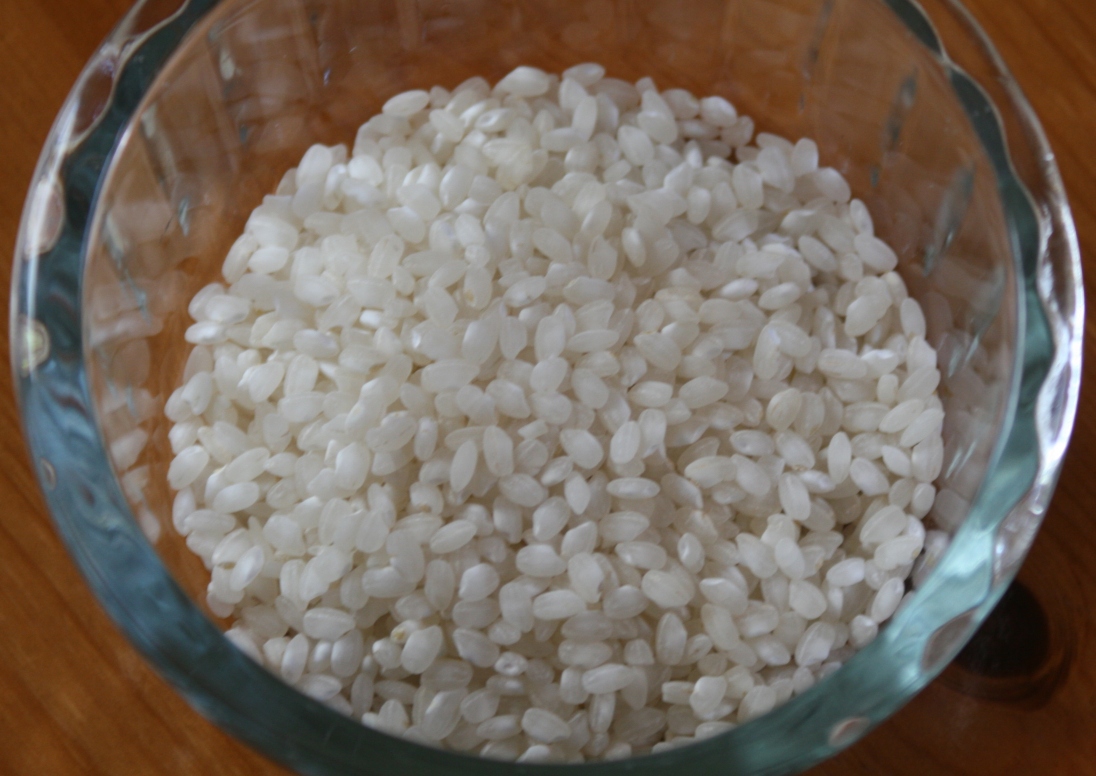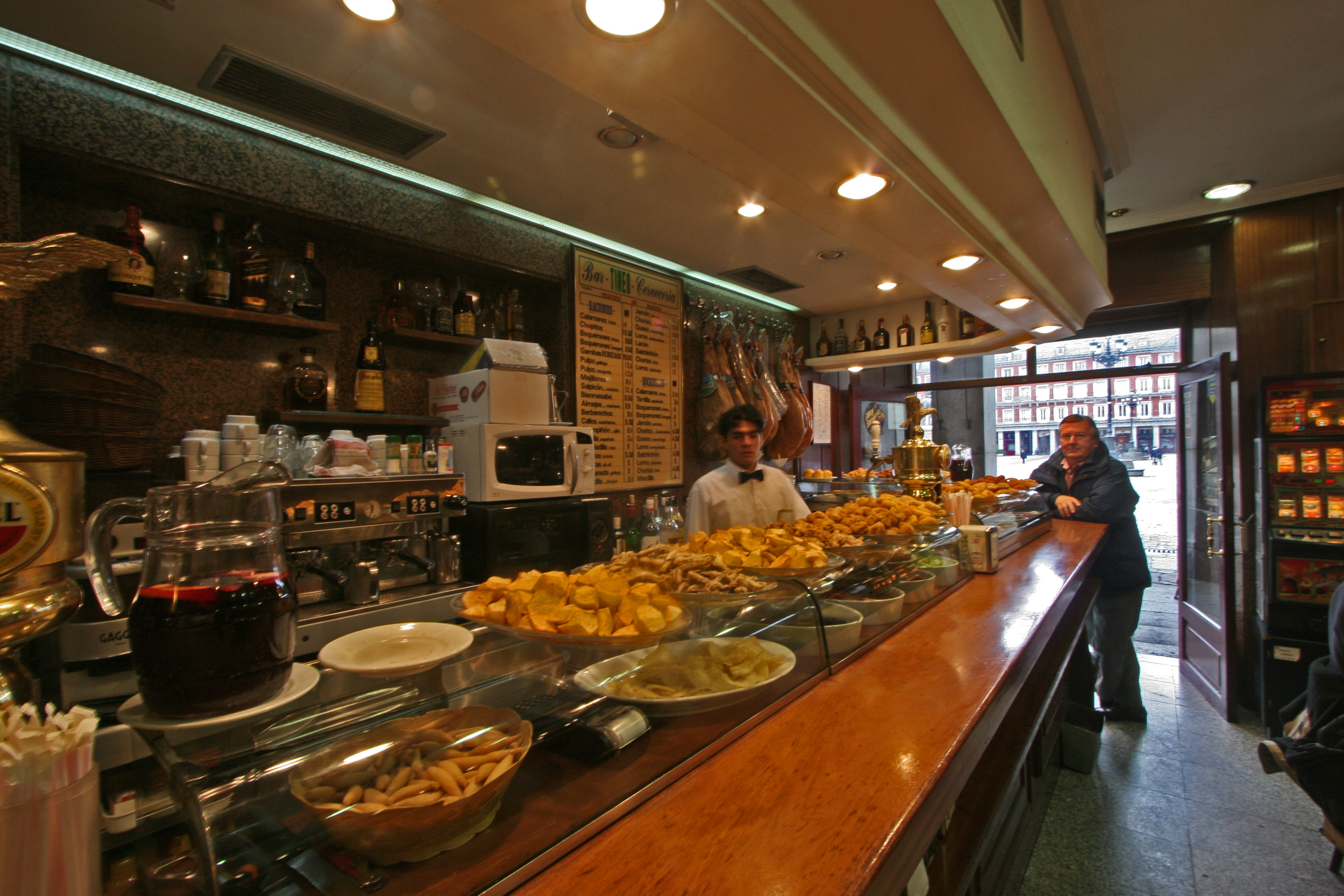|
Julian Serrano Tapas
Julian Serrano Tapas is a tapas restaurant in Las Vegas, Nevada in the United States. Owned by Julian Serrano, it's located inside the Aria Resort and Casino and is Serrano's second restaurant in Las Vegas after Picasso. History Julian Serrano wanted to open a Spanish-style restaurant for over a decade. In 2009, MGM Resorts International offered Serrano a contract to open a restaurant at the new Aria Resort and Casino. Serrano agreed to the restaurant contract as long as he could have a tapas restaurant. Serrano traveled to Spain to find a designer for the restaurant. The design firm Gente de Valor was selected. Serrano traveled to DC to meet chef Jose Lopez Picazo, a fellow chef from Madrid. Lopez Picazo was hired as chef. The restaurant's first menu tasting took place before the kitchen was operational. Executives from MGM and Serrano tasted between 25 and 30 dishes in 40 minutes. The restaurant opened a few weeks later to 600 guests on the first day. Design and ambiance The ... [...More Info...] [...Related Items...] OR: [Wikipedia] [Google] [Baidu] |
Julian Serrano
Julián Serrano is a Spanish chef who lives and works in the United States. He first gained attention in San Francisco and is now most active in Las Vegas. Biography Born in Madrid, he studied in Marbella. He worked in several restaurants, Caribbean cruise liners, Nashville and San Francisco before being hired at Masa's. He is executive chef of the restaurant Picasso in Las Vegas. Serrano also has a restaurant at Aria named after him serving tapas and other Spanish food, as well as molecular gastronomy. It was noted as one of ''Esquire Magazine's'' "20 Best New Restaurants in 2010". In April 2015, he opened Lago at the Bellagio. Serrano is a two-time winner of the James Beard Foundation Award (Best Chef Pacific 1998 & Best Chef Southwest 2002). A native of Madrid, Serrano is a graduate of the Escuela Gastronomie P.P.O. hotel management school in Marbella, Spain. He has spent time at Lucas-Carlton in Paris, Hotel de France in Auch, France, Chez Max in Zurich and L’Aubergin ... [...More Info...] [...Related Items...] OR: [Wikipedia] [Google] [Baidu] |
Asian Fusion
Fusion cuisine is cuisine that combines elements of different culinary traditions that originate from different countries, regions, or cultures. They can occur naturally and become aspects of culturally relevant cuisines, or they can be part of the post-1970s movement for contemporary restaurant innovations. In July of 2002, the term fuison cuisine was added to the ''Oxford English Dictionary''. It defined it as, "fusion cuisine: originally U.S. a style of cookery which blends ingredients and methods of preparation from different countries, regions, or ethnic groups; food cooked in this style." Categories Fusion food is created by combining various cooking techniques for different cultures to produce a new type of food. Although it is commonly invented by chefs, fusion cuisine can occur naturally within the different cuisines of a region or sub-region. These can include larger regions, such as East Asian cuisine, European cuisine, and Southwestern American cuisine, as well a ... [...More Info...] [...Related Items...] OR: [Wikipedia] [Google] [Baidu] |
Xtabentún (liqueur)
Xtabentún is an anise liqueur made in Mexico's Yucatán region from anise seed, and fermented honey produced by honey bees from the nectar of xtabentún flowers. Rum is then added to the anise and honey mixture. Because of the rum content, the xtabentún liqueur is sometimes called a "distilled honey" beverage, which is misleading, because the honey alcohol is fermented, not distilled. It is, nonetheless, a spirit beverage, since rum, a distilled product, is added. Distilleries still survive today in the Yucatán that produce the liqueur.Ott, Jonathan (1998)The Delphic Bee: Bees and Toxic Honeys as Pointers to Psychoactive and Other Medicinal Plants. ''Economic Botany'' 52(3): 260-266. Origin Xtabentún may have its origin in ''balché'', a ceremonial liquor produced by the Maya.Grupo AMSA (Spanish) The strong flavor did not appeal to the Spanish ''conquista ... [...More Info...] [...Related Items...] OR: [Wikipedia] [Google] [Baidu] |
Carajillo
A ''carajillo'' () is a hot coffee drink to which a hard liquor is added. It is typical of Spain and several Latin American countries, such as Colombia, where it is usually made with brandy, Cuba, where it is usually made with rum, and some areas of Mexico, mezcal or a coffee liqueur such as Kahlúa or Tía María. Carajillo is usually served in a small glass. According to folk etymology, its origin dates to the times when Cuba was a Spanish province. The troops combined coffee with rum to give them courage. Spanish means courage, and its diminutive form is , later changing to ''carajillo'', while is an expletive in Latin American Spanish. In Catalan, the ''carajillo'' is called . A similar Italian drink is known as ''caffè corretto''. Preparation There are many different ways of making a ''carajillo'', ranging from an espresso with the spirit simply poured in, to heating the spirit with lemon, sugar and cinnamon and adding the coffee last. Although the carajillo is kno ... [...More Info...] [...Related Items...] OR: [Wikipedia] [Google] [Baidu] |
Sangria
Sangria (, es, sangría , pt, sangria ) is an alcoholic beverage originating in Spain and Portugal. Under EU regulations only those two Iberian nations can label their product as Sangria; similar products from different regions are differentiated in name. A punch, sangria traditionally consists of red wine and chopped fruit, often with other ingredients or spirits. Sangria is very popular among foreign tourists in Spain even if locals do not consume the beverage that much. It is commonly served in bars, restaurants, and chiringuitos and at festivities throughout Portugal and Spain. Penelope Casas, ''1,000 Spanish Recipes'' (Houghton Mifflin Harcourt, 2014), p. 669. Clericó is a similar beverage that is popular in Latin America. History and etymology ''Sangria'' means "bloodletting" in Spanish and in Portuguese. The term ''sangria'' used for the drink can be traced back to the 18th century. According to the ''SAGE Encyclopedia of Alcohol'', sangria's origins "cann ... [...More Info...] [...Related Items...] OR: [Wikipedia] [Google] [Baidu] |
Piquillo Peppers
The piquillo pepper is a variety of Chili pepper, chili, ''Capsicum annuum'', having a sweet taste with little to no heat, fruits about 7 cm long, well suited for growing in pots, that is traditionally grown in Northern Spain near the town of Lodosa. Its name is derived from the Spanish for "little beak". Preparation Typically, the peppers are hand-picked during two harvest seasons between September and December. They are roasted over embers, which gives them a distinct sweet, spicy flavour, more akin to bell peppers than chilli peppers, despite their small size. They are then peeled and again grilled in a grill bar for extra flavour and texture then marinated with salt, pepper, and olive oil and then de-seeded by hand, before being packed into jars or tins for sale. Piquillo peppers are often stuffed with meat, seafood, or cheese, and served as tapas. Nutrition Piquillo peppers are high in fiber and vitamins C, E, A, and B. In particular, their vitamin C content is very high, ... [...More Info...] [...Related Items...] OR: [Wikipedia] [Google] [Baidu] |
Capsicum Pubescens
''Capsicum pubescens'' is a plant of the genus ''Capsicum'' (pepper). The species name, ''pubescens'', refers to the hairy leaves of this pepper. The hairiness of the leaves, along with the black seeds, make ''Capsicum pubescens'' distinguishable from other Capsicum species. ''Capsicum pubescens'' has pungent yellow, orange, red, green or brown fruits. This species is found primarily in Central and South America, and is known only in cultivation. It is consumed fresh, as a paste, dried, or ground. It is called ''rocoto'' (Quechua, ''rukutu'', ''ruqutu) in Peru and Ecuador, ''locoto'' in Bolivia and Argentina (Aymara, ''luqutu''), and in Mexico ''manzano'' (Spanish for "apple") pepper for its apple-shaped fruit. Of all the domesticated species in the family ''Capsicum'', it is the least widespread and most genetically distinct. Description Vegetative characteristics Like all other species of the genus ''Capsicum'', plants of the species ''Capsicum pubescens'' grow as a shrub, b ... [...More Info...] [...Related Items...] OR: [Wikipedia] [Google] [Baidu] |
Paella
Paella (, , , , , ) is a rice dish originally from Valencian Community, Valencia. While non-Spaniards commonly view it as Spain's national dish, Spaniards almost unanimously consider it to be a dish from the Valencian community, Valencian region. Valencians, in turn, regard ''paella'' as one of their identifying symbols. It is one of the best-known dishes in Spanish cuisine. The dish takes its name from the wide, shallow traditional pan used to cook the dish on an open fire, ''paella'' being the word for a frying pan in Valencian language, Valencian/Catalan language. As a dish, it may have ancient roots, but in its modern form, it is traced back to the mid-19th century, in the rural area around the Albufera lagoon adjacent to the city of Valencia, on the Mediterranean coast of Spain. ''Paella valenciana'' is the traditional paella of the Valencia Region, Valencia region, believed to be the original recipe, [...More Info...] [...Related Items...] OR: [Wikipedia] [Google] [Baidu] |
MGM Resorts International
MGM Resorts International is an American global hospitality and entertainment company operating destination resorts in Las Vegas, Massachusetts, Detroit, Mississippi, Maryland, and New Jersey, including Bellagio, Mandalay Bay, MGM Grand, and Park MGM. The company began operations in 1987 as MGM Grand, Inc. and became MGM Mirage in 2000, after acquiring Mirage Resorts. In the mid-2000s, growth of its non-gaming (lodging, food, retail) revenue began to outpace gaming receipts and demand for high-rise condominiums was surging, with median property prices in Las Vegas twice the national average. The company shifted its focus from owning and operating resorts and casinos to developing and building real estate in the leisure and gaming industry—launching the massive CityCenter mixed-use project, which was at the time of its construction the world's largest construction site and ranks as one of the most expensive real estate projects in history. City Center's development coincided wi ... [...More Info...] [...Related Items...] OR: [Wikipedia] [Google] [Baidu] |
Tapas
A tapa () is an appetizer or snack in Spanish cuisine. Tapas can be combined to make a full meal, and can be cold (such as mixed olives and cheese) or hot (such as ''chopitos'', which are battered, fried baby squid, or patatas bravas). In some bars and restaurants in Spain and across the globe, tapas have evolved into a very sophisticated cuisine. In some Central American countries, such snacks are known as ''bocas''. In parts of Mexico, similar dishes are called ''botanas''. History The word "tapas" is derived from the Spanish verb ''tapar'', "to cover", a cognate of the English ''top''. In pre-19th-century Spain tapas were served by ''posadas'', ''albergues'' or ''bodegas'', offering meals and rooms for travellers. Since few innkeepers could write and few travellers read, inns offered their guests a sample of the dishes available, on a "tapa" (the word for pot cover in Spanish). According to ''Joy of Cooking'', the original tapas were thin slices of bread or meat wh ... [...More Info...] [...Related Items...] OR: [Wikipedia] [Google] [Baidu] |


